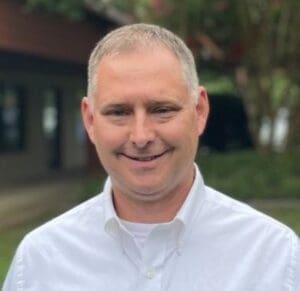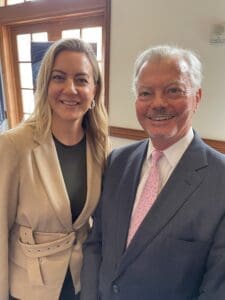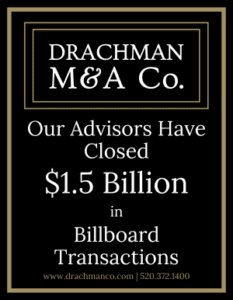To sell more OOH faster we must know what buyers, in this case professional buyers, want from sales reps. I interviewed Ali Broback, Chief Client Officer, Partner at ODN, and Matt Broder, VP of Media, at ODN to uncover the things they want OOH sales reps to know.
Kevin: What do you wish reps knew about the RFP process?

Matt Borders: Our goal is to make the RFP process as fast and efficient as possible. Reps can facilitate this by sending everything at once, not just the inventory, but also the spec sheets, and all the information needed. It would eliminate a ton of emails.
Also, we want reps to consider what they would do if they were the client? We don’t want a kitchen sink plan; don’t want 50 boards when they know we have a budget for five. Think like a client. Don’t be the salesman. Be efficient. It makes it much easier on the buyer and avoids them having to filter through all that information.
Ali Broback: In addition to bringing the inventory information up front, be sure there aren’t any hidden fees, taxes, install fees, etc., This is all coming from the same budget, and if we don’t know all of the add-on fees, it creates difficult conversations later.
Kevin: Having worked as a rep, some managers want more options in the proposal. “You’re the rep. Let the client decide.” Reps need to reinforce with the sales manager, the need to give the buyer what they want. Consider including a secondary proposal that would be great client solutions but would be outside the RFP parameters.
Ali Broback: Be consultative, not just an order taker. We can tell the difference with reps. It is a feel, when you get the email, you feel it when you meet them in person, you feel it when you’re talking to them on the phone. You can tell if there’s a little bit of heart and soul into what they’re doing, and they’re not just an order taker.
Matt Borders: There should always be a thought process (rationale) behind what you’re sending. Don’t be an order taker. Just because the chartist has sent you a plan, and it’s available, understand that if we are asking for a directional campaign, we do not want a board past the location going the wrong direction. When you do, it is a signal, “Okay, this particular rep is really just trying to sell us anything. They’re not working as a partner; they’re working as a salesperson.” It does paint a picture of somebody who is just a middleman. Be a partner.

Ali Broback: With RFPs we don’t always know all the information. An agency client may say to us, “We’ve got a new client. We can’t tell you who it is. We don’t have a budget. We’re just putting our feelers out there.” Then we send an RFP to our reps with that same information. We always get asked, “Who’s the client? What’s the budget?” I said in the email, I don’t know the budget; I don’t know the client. There are a lot of times when our clients are really just putting their feelers out there, trying to understand if out-of-home is the right fit for this particular client. Maybe it’s a new biz pitch, and we’re just helping out.
Kevin: My experience has been that ODN is of the highest integrity, but I’ve worked with so many shops that are not being honest. They don’t shoot straight with you. It leads to reps being jaded. “Really, you don’t know the client?” “Really, you don’t know the budget?” It’s incumbent on OOH reps to understand (maybe consult your management or other reps) which shops shoot straight and which shops don’t, because it will save you a lot of wasted effort.
Matt Borders: Something OOH reps don’t know is that clients shop a lot. They shop agencies all the time, even when they’re in set agreements. A lot of the RFPs that come through where we don’t know the details, we typically don’t know if they have some type of agreement. They contacted us because of a referral. Those are the RFPs that do come through where they say, “Well, you can’t reveal the client. We don’t know what the budget is, but we want to see what your capabilities are.” Some RFPs are capability RFPs. They’re looking at our software, not necessarily what the rep is sending us, but we still rely on those reps to send us accurate information to be able to provide to the client.
Kevin: Are most agencies paid hourly, or do they accept part of the commission, or does it vary a lot?
Ali Broback: What I come across the most is a markup or a margin that agencies are putting on the media they’re buying.
Kevin: How much margin?
Ali Broback: We never know how much they’re marking up or adding. But I definitely come across agencies who say, “We do not need to add anything to this. We are fee-based.” But it seems like that’s the lesser of what we’re running into.
Kevin: Regarding agencies who are putting out feelers, even though they have an agency of record under contract, the average lifespan of a CMO and also an agency/client relationship is about 36 months. That’s enormous churn, and it seems to have gotten choppier over the last 10 years. How do you defend or run your business in that environment?
Ali Broback: We see that. I think we go into it with the mentality of… I was in billboard sales, and it was like asking a client to go on a date with me, essentially. Buying a billboard, is a date. Asking a brand or an agency to use you as a full partner, that’s a marriage. We don’t like to go down this hole, “Oh, we need an AOR.” I think an AOR inspires complacency. What I like to say is, “Hey, we’re going to keep working and earning your trust and earning these budgets and earning these projects, and as soon as it’s not working for you, as soon as we’re not solving a problem for you and your team, then it’s not a good fit for you. And I don’t want you to be stuck with an agency that’s not working for you.”
We’ve got new brands and new agencies that we’re pitching to all the time. They ask, “Do we have to sign an AOR?” I explain, “No, we are here to help you. As long as we’re doing a kick-ass job, then this is going to work great.” I think we have less turnover, than the numbers you mentioned, with our brands and agencies. It shows that our people, our account managers, our media buyers, are always working really, really hard to keep and maintain that business by being proactive.
NEXT TIME: We’ll talk about the spectrum of agencies/buyers.
Gaining insights into the OOH sales process is why the OOH Sales Academy was created. Now is the time to allocate training dollars in your 2025 budget to secure this competitive advantage for your sales reps in 2025. Plan to enroll your reps in the OOH Sales Academy which begins January 14, 2025, and runs for 12 weeks.
For more information, visit my website: https://oohsalesfaster.com/sales-academy/ or contact me at 612-387-5349. You can be invoiced in either December or January
To receive a free morning newsletter with each day’s Billboard insider articles email info@billboardinsider.com with the word “Subscribe” in the title. Our newsletter is free and we don’t sell our subscriber list.
Paid Advertisement

















